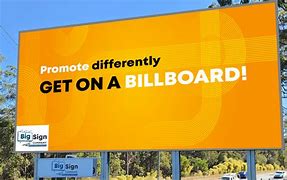Introduction
In an era dominated by digital marketing, the effectiveness of traditional advertising mediums like billboards has come under scrutiny. With brands shifting their focus to online platforms, the question arises: are traditional billboards still relevant in the digital age? Despite the growth of online advertising, traditional billboards remain a significant component of outdoor advertising. They provide unique advantages that digital platforms cannot fully replicate. This article explores the impact of traditional billboards in modern advertising, evaluating their effectiveness, strengths, and potential drawbacks.
The Enduring Appeal of Traditional Billboards
Traditional billboards, often found along highways, in urban centers, and near commercial hubs, have been an essential advertising medium for decades. They serve as large, unavoidable advertisements that capture the attention of commuters and pedestrians alike. Unlike digital ads that require user interaction (such as clicking a link or opening an email), billboards deliver their messages passively, ensuring widespread visibility.
One of the primary reasons billboards remain effective is their ability to reach a mass audience. Unlike online ads, which may be limited by ad-blockers or skipped by users, billboards have a continuous presence. According to a study by the Outdoor Advertising Association of America (OAAA), 71% of consumers often look at roadside billboards while driving (source). This statistic highlights how billboards effectively capture attention, making them a valuable tool for brand awareness.
Traditional vs. Digital Advertising: A Comparative Analysis
The rise of digital advertising has undoubtedly transformed the marketing landscape. With tools such as pay-per-click (PPC) ads, social media promotions, and influencer marketing, businesses can target specific demographics with high precision. However, traditional billboards offer advantages that digital advertising cannot completely replace:
- High Visibility and Constant Exposure: Billboards are strategically placed in high-traffic areas, ensuring that they are seen by thousands, if not millions, of people daily. Unlike digital ads that disappear after a campaign ends, physical billboards provide continuous exposure throughout the duration of the advertisement.
- Non-Intrusive Advertising: Online ads often interrupt a user’s browsing experience, leading to frustration and ad-blocker usage. Billboards, on the other hand, integrate seamlessly into the environment without disrupting consumer activity.
- Local Market Penetration: For businesses targeting local customers, billboards are highly effective. They allow businesses to promote their services to residents and commuters in specific geographic locations, reinforcing brand recognition.
The Challenges Facing Traditional Billboards
Despite their strengths, traditional billboards also face significant challenges in the digital age. One of the main drawbacks is the inability to measure direct engagement. Unlike digital ads, where businesses can track clicks, impressions, and conversions, billboard advertising lacks precise analytics. Companies must rely on indirect methods such as sales data and customer feedback to evaluate effectiveness.
Additionally, traditional billboards require substantial investment. Costs for designing, producing, and renting billboard space can be high, making it less feasible for small businesses with limited budgets. According to industry estimates, the average cost of a billboard ad ranges from $750 to $14,000 per month, depending on location and size (source). This cost variation makes billboard advertising more suitable for established businesses rather than startups or small enterprises.
Digital Billboards: A Modern Evolution
To adapt to the digital era, the billboard industry has evolved with digital billboards. These screens offer dynamic content that can be updated in real time, allowing advertisers to display multiple ads throughout the day. Digital billboards combine the strengths of traditional outdoor advertising with the flexibility of digital marketing.
Advantages of digital billboards include:
- Real-Time Updates: Advertisers can change content instantly, making it ideal for time-sensitive promotions.
- Enhanced Engagement: Some digital billboards incorporate interactive elements such as QR codes and social media integrations, bridging the gap between offline and online marketing.
- Higher Revenue Potential: Multiple advertisers can share screen time, allowing billboard owners to generate higher revenue.
However, digital billboards also come with challenges, including higher installation and maintenance costs. Additionally, screen malfunctions or power outages can disrupt advertising campaigns.
Case Studies: Brands Leveraging Billboards Successfully
Despite digital advancements, many brands continue to invest in billboard advertising. For example, Apple’s “Shot on iPhone” campaign effectively utilized billboards to showcase user-generated content, reinforcing the quality of their product through real-world visuals. Similarly, Coca-Cola frequently employs billboards for branding campaigns that emphasize their iconic logo and messaging.
Moreover, local businesses benefit significantly from billboard advertising. Restaurants, law firms, and retail stores often use billboards to target commuters who pass by their locations daily. This localized approach enhances brand recall and drives foot traffic to physical stores.
Conclusion: Are Traditional Billboards Still Effective?
While the digital advertising landscape has transformed marketing strategies, traditional billboards continue to hold significant value. Their ability to reach a broad audience, provide constant exposure, and deliver non-intrusive advertising makes them a relevant tool in modern marketing. However, the effectiveness of billboard advertising depends on factors such as location, design, and messaging strategy.
Businesses should adopt a balanced approach, integrating both traditional and digital marketing to maximize reach and engagement. By leveraging the strengths of both mediums, brands can create a comprehensive marketing strategy that ensures visibility in today’s competitive market.



